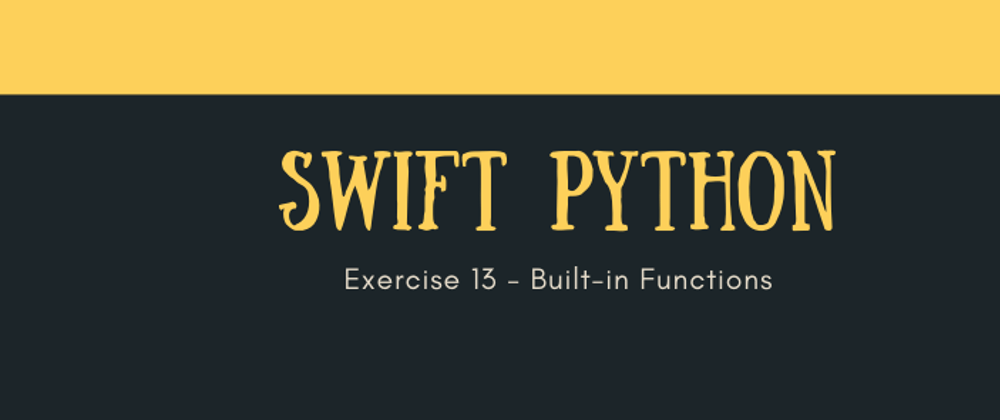Some built-in functions
We do recommend you check out the python doc, see the library reference and click on the built-in functions.
In the previous exercise, Exercise 12 (Functions), we looked into functions and we created a couple of our own. Python comes packaged with some function and these functions are known as the built-in functions.
Some built-in functions
- abs(x)
- divmod(a, b)
- float(x)
- int(x)
- input(prompt)
- len(x)
- list(x)
- max(x)
- min(x)
- pow(a, b)
- print(a)
- range(start, end, step)
- reversed(x)
- round(x)
- sorted(x)
- str(x)
- sum(x)
- type(x)
- chr(i) and ord(s)
Examples
# abs - returns an absolute value of a number
print(abs(2.34), abs(-23.4))
# round - take a number x, rounds it to y decimal places
print(round(23.23567, 2))
# divmod - Take two args and return their quotient and remainder
print(divmod(23, 6))
# pow - take 2 args and returns x raised to the power y
print(pow(2, 3))
# max, min, sum, sorted, reversed
# the above functions are used on iterables
my_list = [7, 2, 4, 5, 1]
print(f"The largest number is: {max(my_list)}")
print(f"The smallest number is: {min(my_list)}")
print(f"The sum of the numbers is: {sum(my_list)}")
print(f"sorted list: {sorted(my_list)}")
# returns a reversed iterator object - castr to a list
print(f"reversed list: {list(reversed(my_list))}")
# [i for i in reversed(my_list)]
# these function does not alter the object
# chr and ord
# chr - returns a character when a number is passed as arg
print(chr(65)) # this are Unicode related
# ord does the opposite of chr
print(ord('A'))
# float, int, str, list, dict, set
# these converts objects to their types
# type returns the (data) type of an object
# len, range
# we have seen these two before, for the size and also looping
# input, print
# we have also seen them before
Practicals
- Implement a function known as
all_f(iterable). This function returnsTrueif all of the elements of theiterableisTrueor theiterableis empty, elseFalse. This is the same as the built-inallfunction. - Implement a function known as
any_f(iterable). This function returnsTrueif any of the elements of theiterableisTrueelseFalse. If the iterable is empty, return False. - Implement the function
abs_f(x)which behaves like theabsfunction, wherex, is a number. - Implement a function,
min_max_fthat returns the minimum and maximum numbers in a given list passed as an argument. Don't use the built-in functionminandmax.
Summary
- Built-in functions make working in python much easier and flexible. We don't have to implement our own version of any of those function.
- Built-in functions do not change the object.







Top comments (0)